By Denise Aulie —
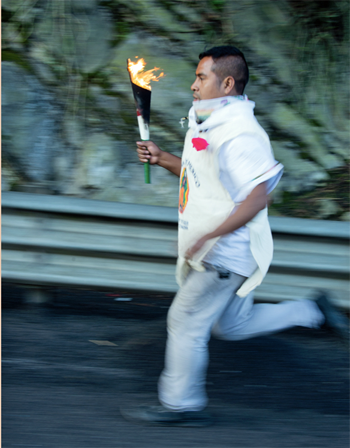
At this time of year over hill and dale and every federal highway in Mexico, you will see pilgrimages of young and old. No, it is not for Christmas, it is for the 12th of December, the day of “La Virgen” i.e. the Virgin of Guadalupe. This representation of the “Mother of God” made in 1531 can be seen all over México. It seems almost every family has a daughter named María Guadalupe or a son named Joseph Guadalupe. It is amazing how one image can entirely captivate a culture.
You can still see men and women crawling on their knees to the Cathedral in Mexico City to give homage to the “Mother of God”, but it’s more common now to see individuals walking, running or bicycling to Mexico City to celebrate.
Six million pilgrims come every year!
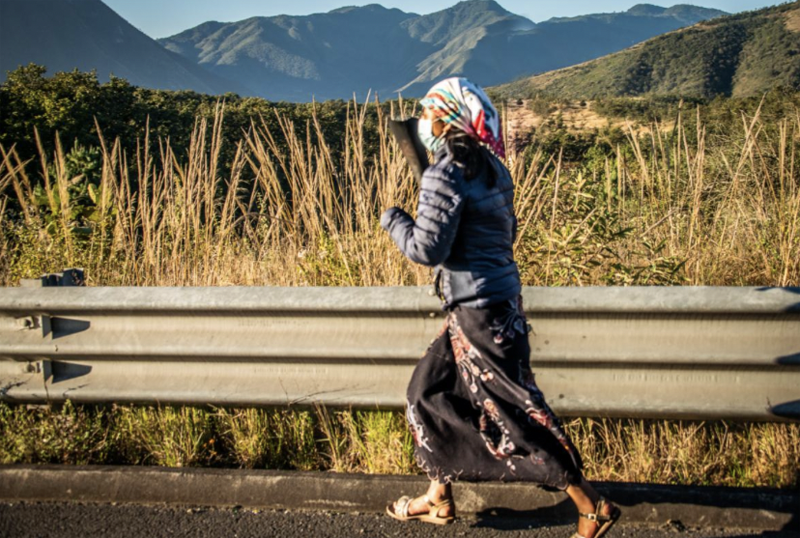
Many pilgrims join in relays through Mexican states. Some carry torches, run in sandals, or bicycle but most load up in trucks traveling hundreds of miles. Their motivations are mixed: some honestly make a pilgrimage to show their devotion to the Virgin; some to earn favor with God hoping it will outweigh sin committed; some go with gratitude for a healing they feel the Virgin gave them; others go to get away from the village or town to have fun in a community of friends; still others see opportunity for economic gain.
No one who is devoted to the Virgin of Guadalupe would actually call these photos or
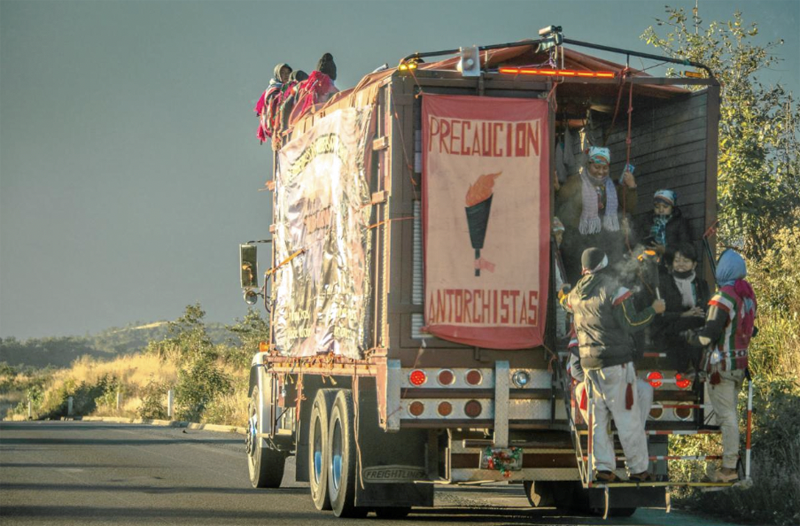
statues “idols” – yet these representations are venerated, kissed, and displayed in prominent places in the home. Incense is burned to them, prayers and promises are made to them and they are carried as sacred objects in parades throughout towns and cities.
There is a powerful hold they have on whole towns. Devotees have fierce loyalty and make quick, bitter judgements if a friend or family member does not give these representations their due reverence.
Last week Ed picked up a group of exhausted men, broken down on their trip home to their southern state of Campeche. The trip north took them 4 weeks. Now on their return each cyclist carried huge statues of the Virgin of Guadalupe on their backs weighing 120 pounds each. They were riding back from a state 8 hours even beyond Mexico City!
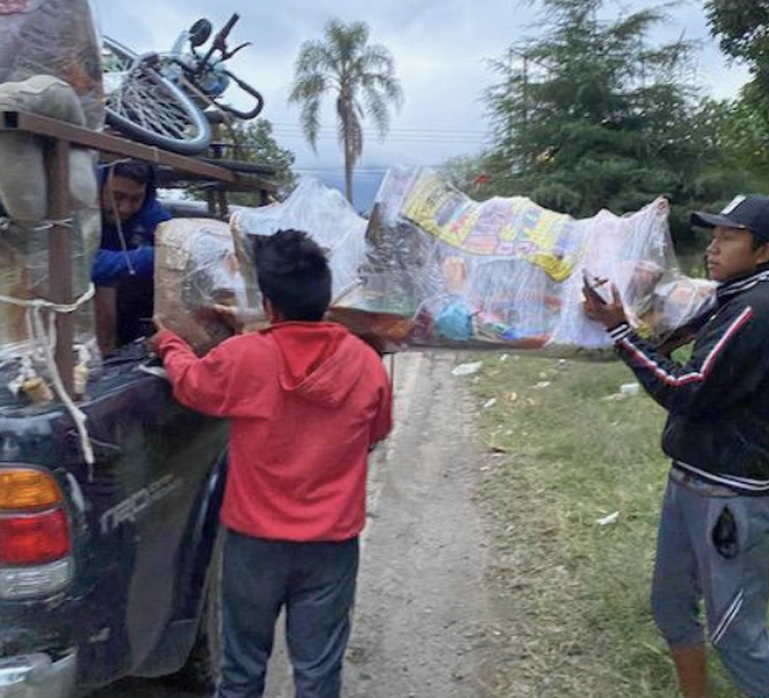
“We went for a little adventure,” they said, “and we will pay for for the trip back home with the sale of these images. They will fetch a lot more money because they have been carried on a pilgrimage. People often give us lodging, food and offerings because we are making a pilgrimage.”
Ed texted me from the highway and asked me for prayer so that he could share the Gospel with these young men.
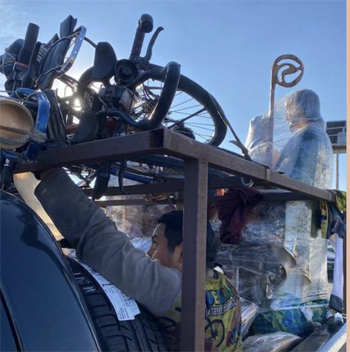
Our goal is never to demean or deride the beliefs of others. We don’t preach against idols. We point them, in an instructive and caring way, to the living Christ and the revelation of Scripture. The focus is always on the risen Jesus, and his work in the innermost needs of those we talk to. This has led to many good conversations and many a tearful, broken response.
One of the men in the truck responded to Ed, “Hey, we don’t know anything about God, really.” So Ed shared with them and they had a good, friendly conversation for many miles. Ed brought them to the place where he had to make a turn-off to some villages, and they unloaded, ready to ride their bikes again, 600 hundred miles home.
The Lord gives daily opportunities to share the Gospel knowing that it is often simply seeds sown on our part, seeds that fall on good or rocky soil. We ask the Lord that in some other time and place for the fruit to come. We never know what our words will do but God promises that nothing we share in His love and truth will ever be in vain. This gives us confidence and comfort.
Just weeks before in a village cabin during a Bible study, we read Psalm 115 which says of idols: “They have ears, but cannot hear, noses, but cannot smell. They have hands, but cannot feel, feet, but cannot walk, nor can they utter a sound with their throats. Those who make them will be like them, and so will all who trust in them.” A little boy who was present piped up, “And they break too!”
We laughed at his enthusiastic outburst and looked at him for a story we knew was coming. “One time my cousins and I were playing soccer in the house. I kicked the ball and it hit my Grandma’s statue of the Virgin on the altar – and it broke into lots of pieces!”
He was horrified at what he had done! Yet, he started to think and it brought the reality home to him. All his family’s often furious accusations for not giving homage to this statue had not changed the turmoil and confusion he saw daily in his extended family’s lives. Peace had not reigned at all. Yet he absolutely knew the change in his own little life and that of his mom because of Jesus.
It was a sweet reminder that children can see reality so clearly at times and can express what they see so transparently. They recognize religious fervor without knowledge is different from the true life-changing power of Christ. They see the Jesus of the Bible – who is active, working moment by moment for His glory and our good. As Peter said, “Though you have not seen Him, you love Him; and though you do not see Him now, you believe in Him and rejoice with an inexpressible and glorious joy.” 1 Peter 1:8 The Lord is truly the “Invisible, Triune God”
He is the WHY of our lives. This is the joy we have in knowing the reality of daily, unwavering gratitude for Christ’s coming. His birth, death and resurrection gave us a new spiritual birth when we didn’t deserve it. Thank you for coming, Jesus! Thank you for forgiveness and freedom from sin. You are victoriously reconciling us to yourself and to one another. May we be faithful and may you use us to give answers to those who, in humility, look for You this Christmas and beyond.
On December 23, the young people of the church are presenting a wonderful Pastorela (Christmas play) and outreach with songs, a message and two 285 pound hogs for dinner and doggie bags for all. People from many villages will come. Would you pray for fruit that remains? We are excited about it and will spend our Christmas in the Sierra.
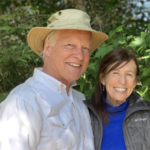
Ed and Denise Aulie are working primarily with indigenous peoples of Mexico – specifically the Nahuatl of Veracruz and the Ch’ol of Chiapas. They encourage Mexican churches in the areas of Biblical leadership and healthy godly church and family life interaction. They use practical projects relating to literacy, agriculture, building etc. to have a Word-Deed ministry. Sharing the Word of God in real life context is the key aspect of their ministry. For more, go here



